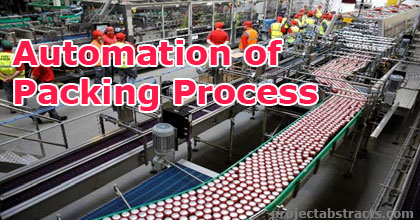The design work that precedes the automation of a process is not an easy job. Each one of the variables and possible risks involved in process must be carefully considered before implement the final design as well the requirements in performance and cost. However automate a dangerous, inefficient or just uncomfortable task entails many benefits that make up for the long period of design process. A well automated line will benefit the production with quality, productivity and capacity among other profits.

Automation of Packing Process
In this project the immediate objective is to automate the “SANDFLEX Hacksaw blades” packaging process in the plant that SNAEurope owns in Lidköping. Actually the packing is completely manual. One operator packs the blades into the boxes meanwhile one more operator loads and unloads the packing station with empty and full boxes respectively. The task is both, tiring and uncomfortable for the operators as well inefficient for the company since the production rate is limited.
Analyzing and observing carefully product and process, different theories and strategies to achieve the goal were developed. Three are the possible solutions to solve the problem, with different levels of automation and technologies. The robotic solution uses an articulated robot to perform all the tasks; the hybrid solution uses pneumatic devices to pack the blades and an articulated robot to support the station loading and unloading the boxes.
Finally the pneumatic solution uses only pneumatic devices, which hold, open and close, push box and blades using airpower; a few sensors detect positions and states, since a PLC coordinates and controls all process. By means of discussing these solutions with the company’s engineers and workers, after a deep literature study and two test of performance, was it possible to select the most suitable solution to accomplish the packaging task. The pneumatic solution is cheap and simple, but at the same time robust and reliable. This design performs the packaging task efficiently and fast. And more important, the operator passes from pack manually the blades to monitor the process.
Source: University of Skövde
Authors: Zia, Muhammad Irfan | Cortés Mora, Felipe